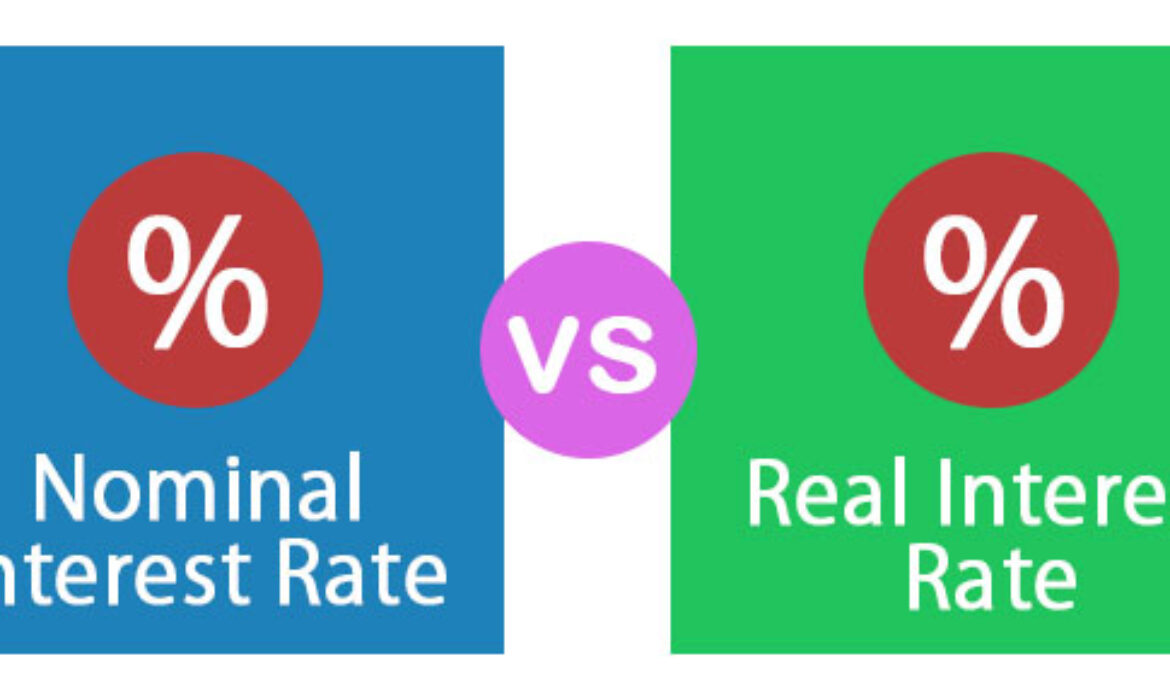
Understanding the difference between nominal and real rates of return is crucial for making smart investment choices. While nominal rates are the surface numbers we often see, real rates dig deeper, showing the true growth of your money after inflation. Grasping this distinction can help you avoid misleading figures and make more informed financial decisions, ensuring your investments truly work for you. Investors seeking insights can benefit from connecting with experts specializing in distinguishing key financial metrics. Ponte Quantum can help investors to connect and learn more about investing.
Nominal vs. Real Rate of Return: Mathematical Formulation and Interpretation
When discussing returns, it’s easy to get lost in the jargon. But let’s simplify things. The nominal rate of return is the “face value” of what you get from an investment. It’s the percentage you see on paper. But, here’s the catch: this number doesn’t tell the full story. Imagine getting a 5% return on your money, but inflation that year is 3%. Your real gain is only 2%. That’s where the real rate of return comes into play.
The real rate of return is calculated by subtracting inflation from the nominal rate. This is what shows the true growth of your investment, factoring in the rising costs of goods and services. If you want to see how much richer you’re getting in buying power, the real return is what matters. It’s like checking the distance traveled after considering a headwind or tailwind on a journey.
For example, if you invested $1,000 at a nominal return of 6%, you’d think you’re earning $60. But if inflation is 4%, your real gain is only $20. This simple calculation can make a big difference in how you see your investment performance. It’s a reminder that what you see isn’t always what you get.
Practical Applications: When to Use Nominal vs. Real Rate of Return
Knowing when to use nominal or real rates can be like choosing the right tool for the job. Nominal rates are useful when you want a straightforward snapshot. Say you’re comparing two savings accounts or looking at bond yields. The nominal rate gives you a quick, simple figure to work with. But when you’re planning for the long haul, like saving for retirement, real rates are your best friend. They consider inflation, which is crucial when thinking years or even decades ahead.
Let’s put this into a real-world scenario. Imagine planning for your child’s college fund. College costs typically rise faster than the general inflation rate. If you only focus on the nominal return of your investments, you might end up short. The real rate helps you see if your savings are growing in terms of what they will buy in the future.
Or consider a country experiencing high inflation. Investors there would be misled by nominal returns that don’t reflect the eroding power of their money. That’s where real rates show their importance. So, when comparing investment options, especially over time, the real rate offers a clearer picture. It’s like checking the weather forecast before heading out—it helps you prepare better.
Comparative Analysis: Implications for Investors and Economists
The difference between nominal and real rates isn’t just academic—it has real consequences. For investors, relying solely on nominal returns can lead to overestimating their gains. It’s like thinking you’ve won a race without noticing you ran on a treadmill. You see the numbers going up, but your actual wealth might be stagnant if inflation is high.
Economists, on the other hand, often look at real rates to gauge the health of an economy. When real rates are low or negative, it could signal trouble, like reduced purchasing power or a sluggish economy. Imagine a country where inflation is running wild, but nominal interest rates remain low. People might still earn something on paper, but their money loses value in the real world.
Consider a historical example: during the 1970s, the U.S. faced “stagflation”—high inflation with stagnant economic growth. Nominal interest rates were high, but real rates were much lower, sometimes even negative. Investors who didn’t account for this found their returns eroded by rising prices.
For both investors and economists, understanding the difference between nominal and real rates is like knowing the difference between a map and the actual terrain. It helps in making informed decisions that reflect the true economic landscape.
Conclusion
Navigating between nominal and real rates isn’t just about numbers; it’s about seeing the bigger picture. By focusing on real returns, you protect your purchasing power and make wiser investments. Whether you’re planning for retirement or just saving for a rainy day, understanding these rates will help you make decisions that safeguard your financial future. Always look beyond the surface to secure lasting gains.



